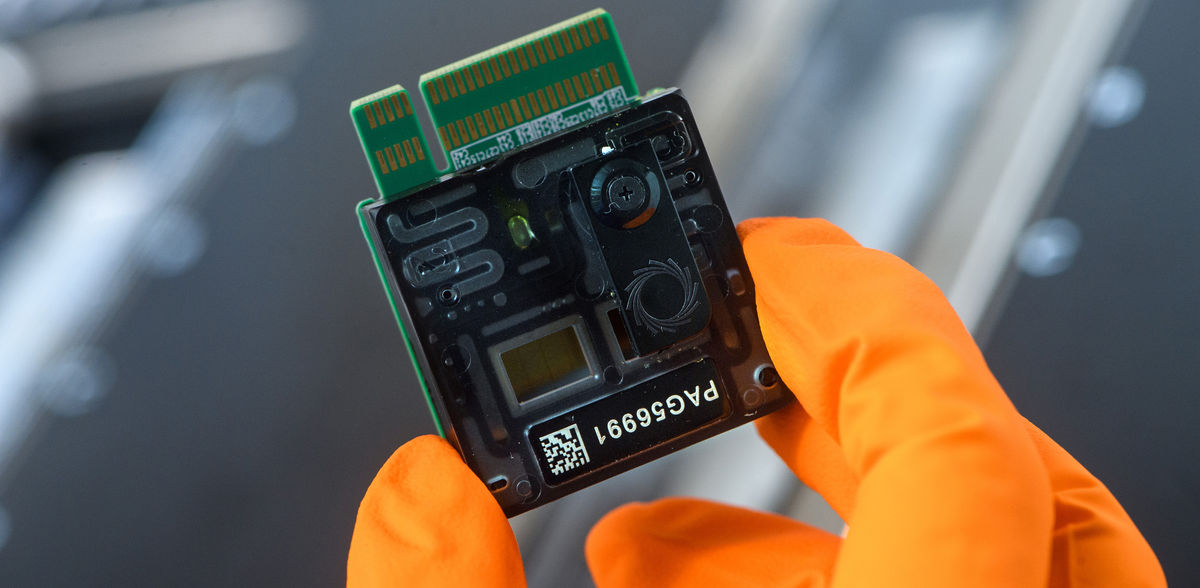Rare kidney disease is genetically decoded
The entire genome of a human being can be analysed on a single sequencing chip
Bartter syndrome type 3 is the result of several structural variants in the genome. By using long-read sequencing, Janine Altmüller and her team from the Max Delbrück Center, the BIH and University Hospital Cologne mapped out the rare disease in unprecedented detail. They have now reported their findings in “Genome Medicine.”
When Dr. Bodo Beck first saw the three children of a family who had fled Syria sitting in his consultation room at University Hospital Cologne, the human geneticist was surprised. His genetic analysis diagnosed Bartter syndrome type 3, but never before had he seen such severe joint changes in patients with this rare disease.
The kidney disease is hereditary – affected individuals lack the CLCNKB gene, which is responsible for a specific chloride channel. The electrolyte balance becomes disrupted because the kidneys cannot reabsorb important nutrients and salts back into the bloodstream during filtration and urine production.
In addition to the absence of the CLCNKB gene, Beck suspected there might be more extensive deletions – areas completely eliminated from the genome – that would explain the severe clinical picture. To find this out would require taking a closer look at the disease-causing genes, so he contacted Dr. Janine Altmüller, head of the Genomics Platform of the Max Delbrück Center and the Berlin Institute of Health at Charité (BIH). Her team, which is based at the Berlin Institute for Medical Systems Biology of the Max Delbrück Center (MDC-BIMSB), has pioneered cutting-edge sequencing technologies like long-read sequencing. This technology enabled them to analyze parts of patients’ genomes that could not previously be resolved. They have now published their findings in the journal “Genome Medicine.”
A tool for analyzing complex structures
Traditional short-read sequencing methods involve breaking up DNA into lots of small fragments, which then have to be reassembled. But when it comes to complex genomic structures, these common clinical technologies reach their limits – such as when sequences are repeated multiple times in a stretch of DNA, as is the case with Bartter syndrome type 3. That explains why no one had previously examined the fine-scale structure of the affected genes.
Long-read sequencing, on the other hand, can accurately read much longer stretches of DNA in a single run, typically in the thousands or even tens of thousands of base pairs. So the individual pieces of this giant puzzle consisting of complex repeating patterns are larger, making it easier to put them back together correctly. It was this advance that led the journal “Nature Methods” to name long-read sequencing its method of the year in 2022.
Using this technology, Altmüller’s team of scientists has now identified various genetic variants that were previously unknown that affect CLCNKB and the neighboring gene CLCNKA. Their study encompassed a cohort of 32 patients from kidney centers in Cologne, Marburg, Münster and London. “In one of the newly discovered structural variants, a small section of one gene is in a similar position in the neighboring gene,” says Altmüller. This genetic pattern has no immediate effect on the kidneys and was present in nearly half of the healthy control individuals. But it was almost always present in the patients with Bartter syndrome.
A hot spot for mutations
The researchers suspect that this pattern in the genome favors the emergence of disease-causing gene variants. “The structural change is fascinating because, in evolutionary terms, it is a mutation hot spot,” says Altmüller. “The pattern increases the likelihood that other structural variants could arise during human evolution.” In fact, the team found eight different deletions in CLCNKB in the patient cohort. What this means, says Altmüller, is that the rare kidney disease does not always result from the same structural variants, but instead involves independent events that share the same genetic background.
The researchers did not discover any additional deleted sequences in the Syrian family. So Bartter syndrome type 3 remained the only diagnosis. “In our health care system, we rarely see such an unusually severe disease course,” explains Beck. “This is because kidney impairment is typically detected much earlier so that late-stage effects, such as those manifesting in the joints, can usually be prevented.
The findings will help scientists better understand the causes of the disease. Such knowledge may also facilitate the development of better diagnostic and treatment options. Altmüller has already taken the first step toward translating the technology into clinical practice: “A pilot study will soon begin with partners from Berlin, Hanover, Tübingen and Aachen in which we want to apply long-read sequencing to a larger cohort of patients with unsolved rare genetic diseases.”























































